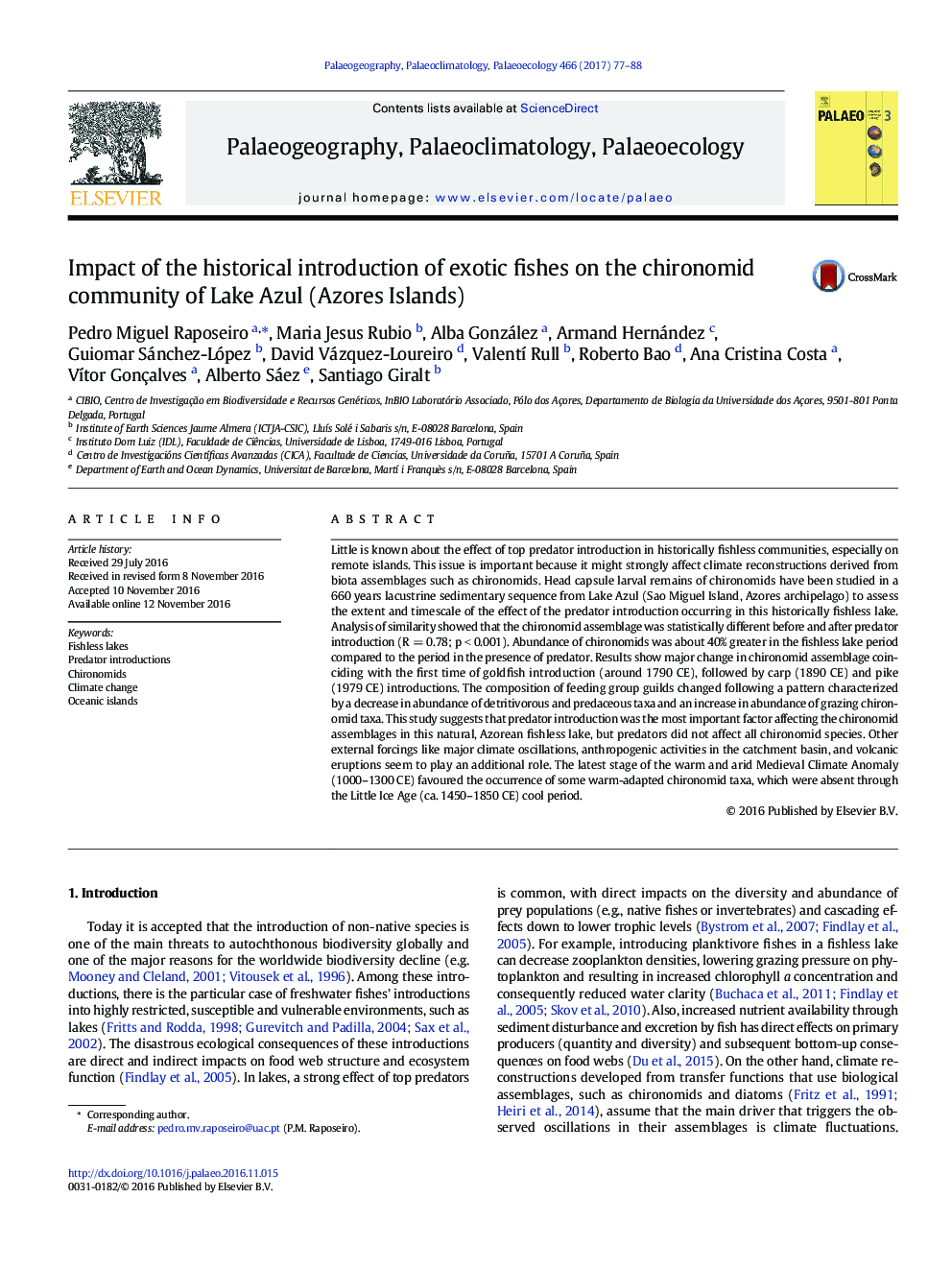| کد مقاله | کد نشریه | سال انتشار | مقاله انگلیسی | نسخه تمام متن |
|---|---|---|---|---|
| 5756020 | 1622126 | 2017 | 12 صفحه PDF | دانلود رایگان |
عنوان انگلیسی مقاله ISI
Impact of the historical introduction of exotic fishes on the chironomid community of Lake Azul (Azores Islands)
ترجمه فارسی عنوان
تأثیر تاریخی ماهی های عجیب و غریب بر روی جمعیت کیرمونید دریاچه آزول (جزایر آزورس)
دانلود مقاله + سفارش ترجمه
دانلود مقاله ISI انگلیسی
رایگان برای ایرانیان
موضوعات مرتبط
مهندسی و علوم پایه
علوم زمین و سیارات
فرآیندهای سطح زمین
چکیده انگلیسی
Little is known about the effect of top predator introduction in historically fishless communities, especially on remote islands. This issue is important because it might strongly affect climate reconstructions derived from biota assemblages such as chironomids. Head capsule larval remains of chironomids have been studied in a 660 years lacustrine sedimentary sequence from Lake Azul (Sao Miguel Island, Azores archipelago) to assess the extent and timescale of the effect of the predator introduction occurring in this historically fishless lake. Analysis of similarity showed that the chironomid assemblage was statistically different before and after predator introduction (R = 0.78; p < 0.001). Abundance of chironomids was about 40% greater in the fishless lake period compared to the period in the presence of predator. Results show major change in chironomid assemblage coinciding with the first time of goldfish introduction (around 1790 CE), followed by carp (1890 CE) and pike (1979 CE) introductions. The composition of feeding group guilds changed following a pattern characterized by a decrease in abundance of detritivorous and predaceous taxa and an increase in abundance of grazing chironomid taxa. This study suggests that predator introduction was the most important factor affecting the chironomid assemblages in this natural, Azorean fishless lake, but predators did not affect all chironomid species. Other external forcings like major climate oscillations, anthropogenic activities in the catchment basin, and volcanic eruptions seem to play an additional role. The latest stage of the warm and arid Medieval Climate Anomaly (1000-1300 CE) favoured the occurrence of some warm-adapted chironomid taxa, which were absent through the Little Ice Age (ca. 1450-1850 CE) cool period.
ناشر
Database: Elsevier - ScienceDirect (ساینس دایرکت)
Journal: Palaeogeography, Palaeoclimatology, Palaeoecology - Volume 466, 15 January 2017, Pages 77-88
Journal: Palaeogeography, Palaeoclimatology, Palaeoecology - Volume 466, 15 January 2017, Pages 77-88
نویسندگان
Pedro Miguel Raposeiro, Maria Jesus Rubio, Alba González, Armand Hernández, Guiomar Sánchez-López, David Vázquez-Loureiro, Valentà Rull, Roberto Bao, Ana Cristina Costa, VÃtor Gonçalves, Alberto Sáez, Santiago Giralt,
